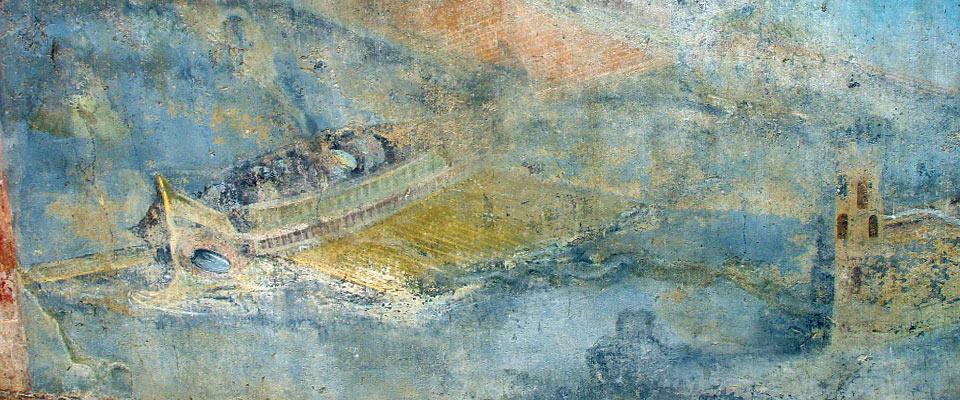A nautical scene from the Suburban Baths near the Porta Marina Gate.
4. Baths and the Castellum Aquae
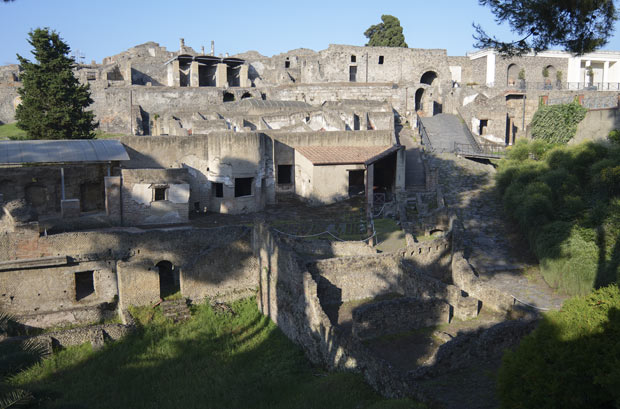
The Suburban Baths at the Porta Marina Gate.
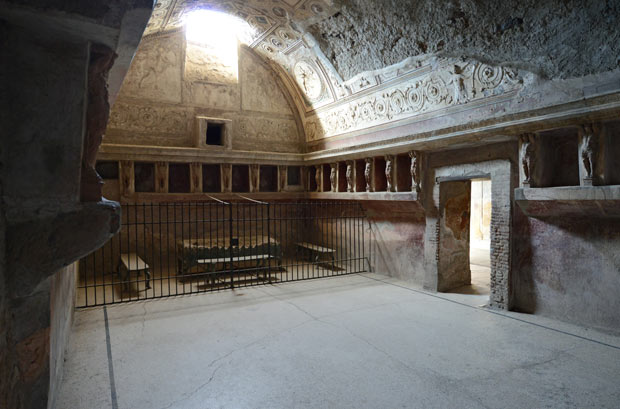
There were several public bath complexes in Pompeii. The above image is of the heated Tepidarium, or warm room, in the Forum Baths, where visitors prepared for the greater heat of the adjacent room, the Caldarium, or hot bath.
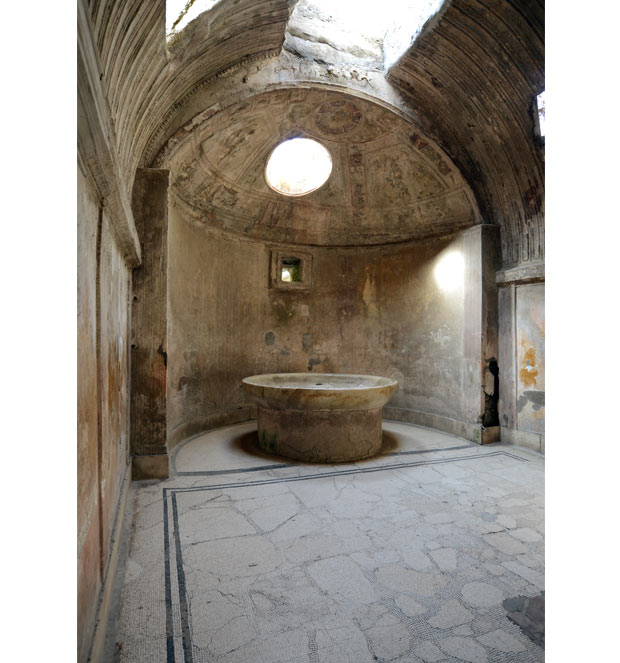
The Caldarium of the Forum Baths. Heat was generated by a large furnace that warmed the floor while pumping hot air into spaces in the walls that vented heat into fill the entire room.
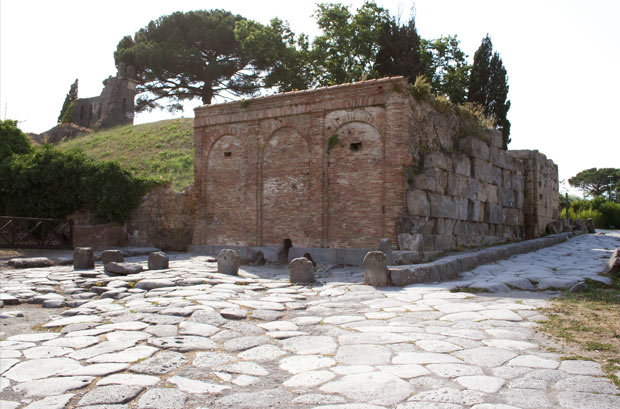
Having multiple baths, private baths and many fountains required great volumes of continuously flowing fresh water. Pompeii was built on a mild slope. An aqueduct fed this water tower, the Castellum Aquae, which was placed at the city's highest point to allow gravity to do the rest.
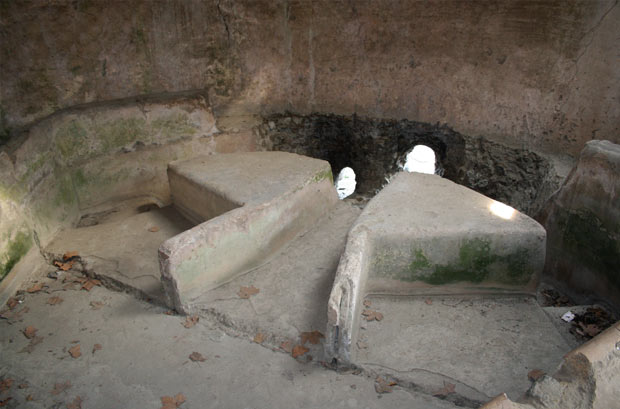
Inside the Castellum Aquae. Water from the local aqueduct fed directly into this building where a sluice way split the flow into three channels. The system had no gateways or valves to restrict or manage flow rates. What wasn't used by the city simply exited as runoff or was absorbed by the subsoil.
